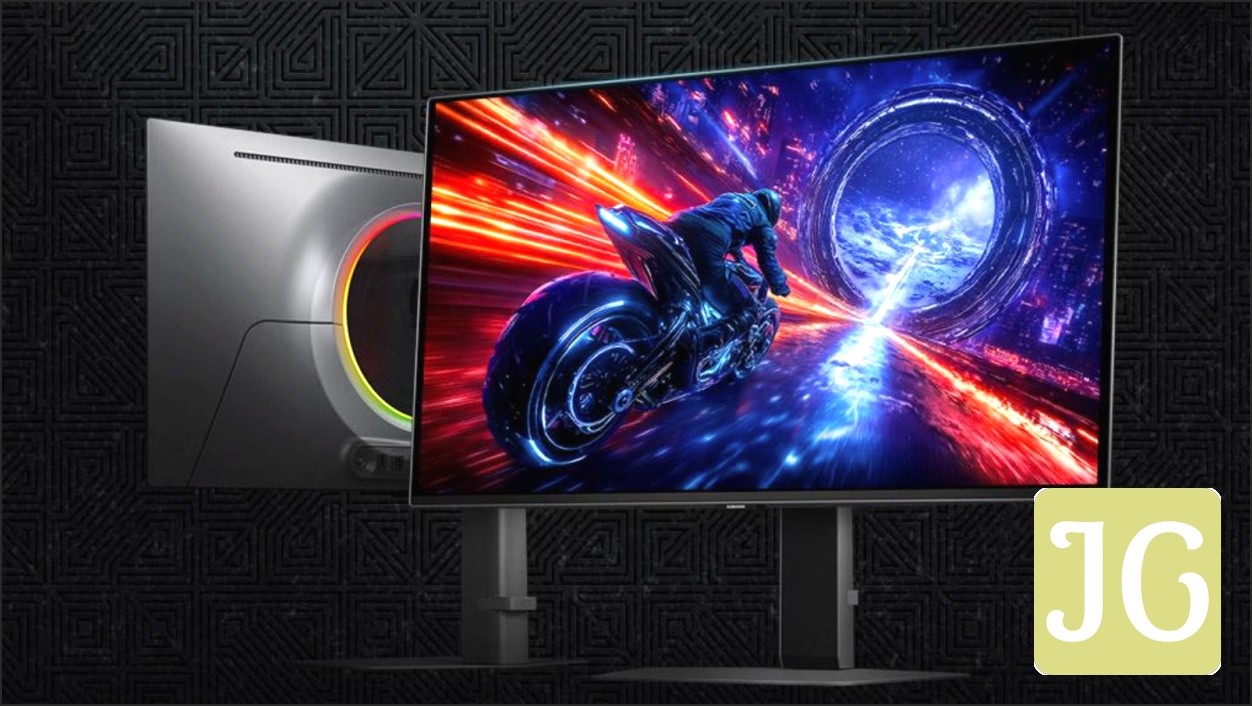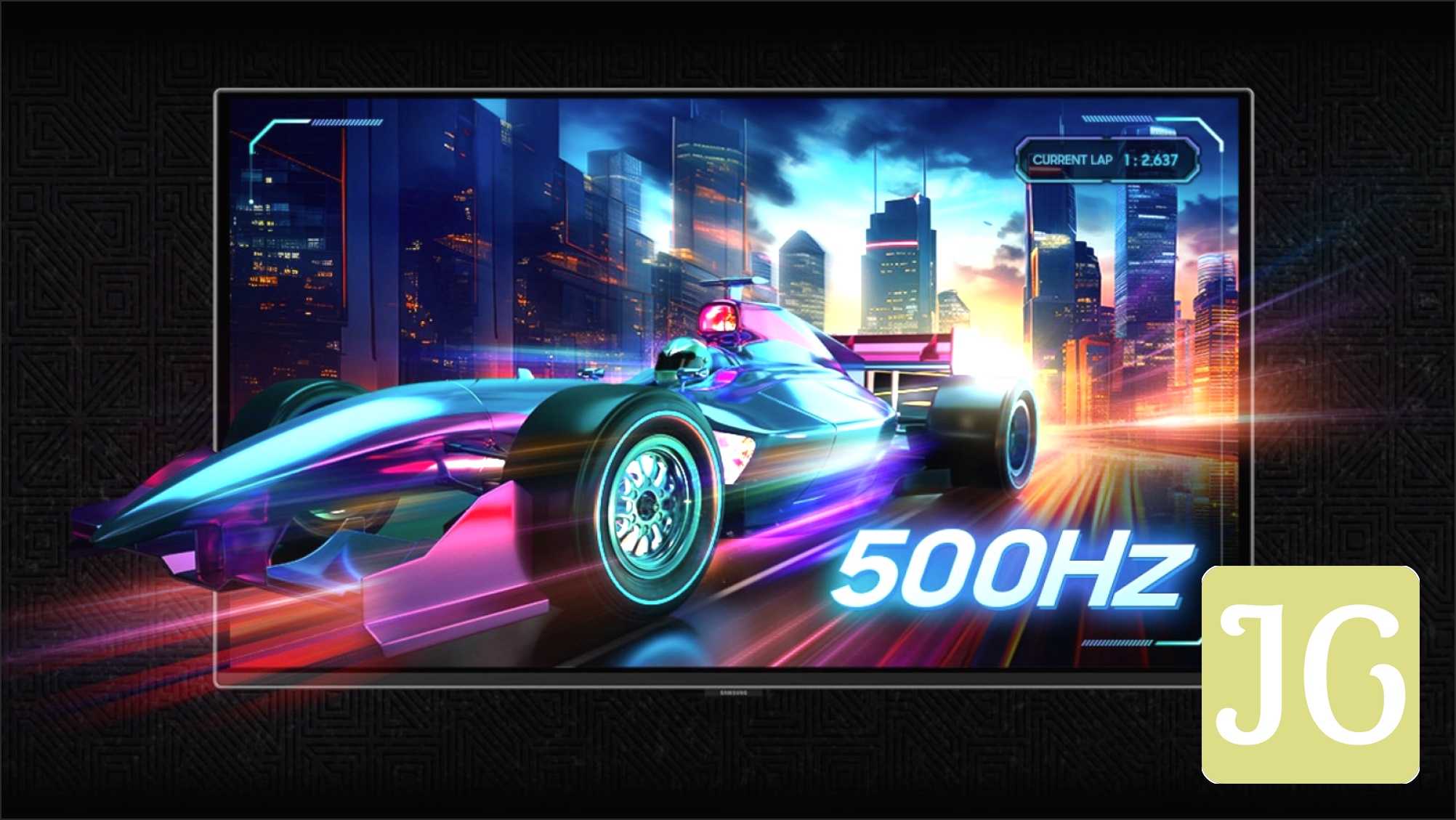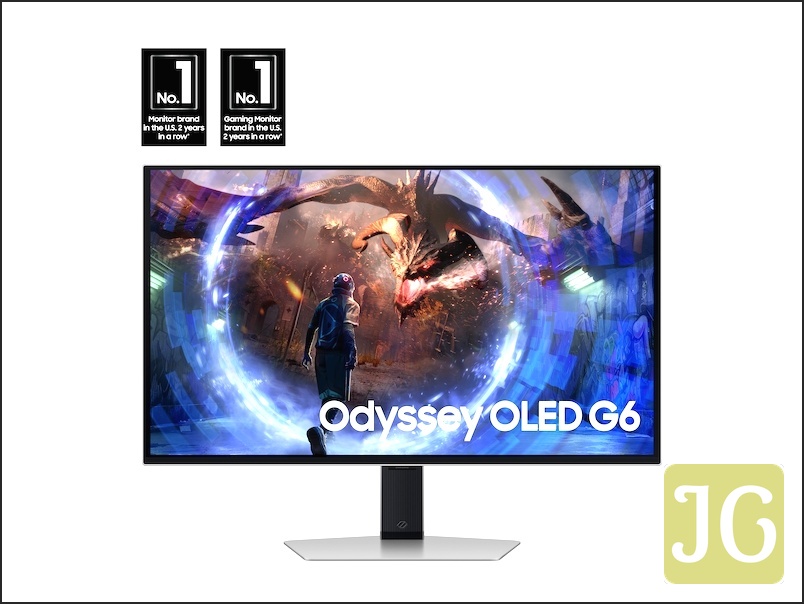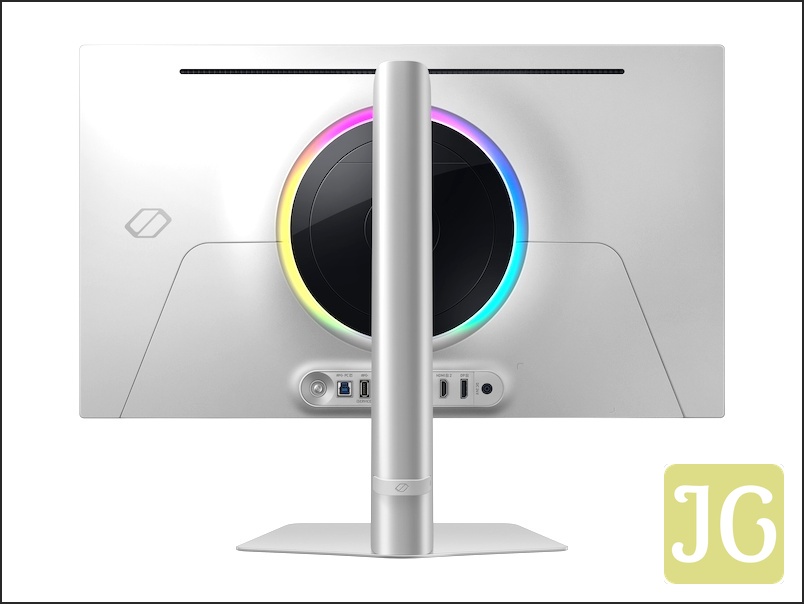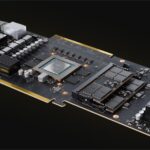Samsung has officially unleashed its latest gaming display innovations onto the market, headlined by the highly anticipated Odyssey OLED G6 and the new Odyssey G7 curved monitors. The star of the show, the 27-inch Odyssey OLED G6, arrives with a staggering claim: it’s the world’s first 500Hz OLED gaming monitor. But in a landscape where gamers are already questioning the practical utility of refresh rates beyond 240Hz and harboring deep-seated fears of OLED burn-in, a critical question emerges: Is this 500Hz OLED a genuine game-changer, or is it merely a triumph of engineering that outpaces real-world utility and current hardware capabilities? At JoltGamer, we cut through the marketing noise to deliver a data-driven analysis, scrutinizing every specification and feature to determine if Samsung’s bleeding-edge tech truly redefines competitive gaming, or if it’s a glimpse into a future that’s not quite here yet.
The 500Hz OLED G6: Unpacking the ‘World’s First’
The Samsung Odyssey OLED G6 (model G60SD), specifically the 27-inch QHD (2560 x 1440) variant, is positioned as a monumental leap in gaming display technology. Samsung touts it as the “world’s first 500Hz OLED monitor,” a claim that immediately grabs attention. Beyond this headline refresh rate, the G6 boasts an exceptionally quick 0.03ms (GtG) response time, a figure that ensures virtually no ghosting or motion blur, crucial for high-stakes competitive play. The panel itself is a QD-OLED, delivering the characteristic perfect blacks and vibrant colors associated with OLED technology, further enhanced by VESA DisplayHDR True Black 500 certification and a peak brightness of 1,000 nits. For color accuracy, it’s Pantone Validated, guaranteeing precise color reproduction. Samsung has clearly engineered the G6 for the most demanding competitive gamers, directly targeting titles like Apex Legends, Call of Duty, Fortnite, and Valorant, where every millisecond and pixel of clarity can impact performance.
500Hz: Perception vs. Practicality – Is It Overkill?
High Refresh Rates and Human Perception: The Diminishing Returns
The human eye’s ability to discern individual frames significantly diminishes as refresh rates climb. While the leap from 60Hz to 144Hz is profoundly noticeable, and even 240Hz offers a tangible improvement in motion clarity and input responsiveness for competitive players, the benefits beyond 360Hz become increasingly subtle. As PCMag has noted, even on high-refresh-rate laptops, most users struggle to perceive a significant difference above 240Hz. For the Odyssey OLED G6’s 500Hz, the primary benefit isn’t necessarily a visually smoother image for the average gamer, but rather the miniscule reduction in system latency, which could theoretically provide an elite-level competitive advantage for professional esports athletes. However, this theoretical advantage is contingent on an equally formidable hardware challenge: consistently hitting 500 frames per second (FPS) at QHD resolution in modern titles. Even for optimized esports games, maintaining such frame rates demands a top-tier GPU, often requiring significant graphical compromises. For graphically intensive AAA games, achieving anywhere near 500 FPS at QHD is simply not feasible with current consumer hardware, rendering the 500Hz capability largely academic for a significant portion of the gaming library.
Average FPS Required for 500Hz at QHD (Hypothetical)
A hypothetical bar chart illustrating the extreme GPU power needed to consistently achieve 500 FPS in popular competitive titles at QHD resolution, highlighting the gap between monitor capability and current hardware reality.
Valorant (Low Settings)
CS2 (Esports Settings)
Apex Legends (Competitive Settings)
Fortnite (Competitive Settings)
Call of Duty (Competitive Settings)
Cyberpunk 2077 (Low Settings)
OLED Burn-in: Samsung’s ‘Safeguard+’ Put to the Test
One of the most significant hurdles for OLED display adoption, particularly among PC gamers who utilize static UI elements, has always been the persistent fear of burn-in. This concern has led to deep skepticism and scrutiny over the effectiveness of burn-in prevention technologies. Samsung addresses this head-on with its proprietary ‘OLED Safeguard+’ technology, debuting in the Odyssey OLED G6. This innovative solution is the world’s first to integrate a pulsating heat pipe within the monitor. It leverages a Dynamic Cooling System that actively evaporates and condenses coolant, a method Samsung claims diffuses heat five times more effectively than traditional graphite sheet methods by significantly reducing the core panel temperature. Furthermore, ‘OLED Safeguard+’ includes intelligent software features that automatically detect static images like logos and taskbars, dynamically reducing their brightness to mitigate the risk of pixel degradation. While these technical advancements are promising, the long-term effectiveness under heavy, sustained gaming loads remains the ultimate test.
The Warranty Question
Perhaps the most significant commitment Samsung makes to alleviate burn-in fears is the inclusion of a comprehensive 3-year warranty that explicitly covers burn-in for the Odyssey OLED G6. This direct assurance addresses a major point of worry and caution from the gaming community. For heavy gamers who plan to use this monitor as their primary display for thousands of hours, a warranty of this nature is not just a nice-to-have; it’s a critical factor in justifying the investment. While the technology behind OLED Safeguard+ is impressive, the warranty provides a concrete safety net, suggesting Samsung’s confidence in their burn-in prevention measures. However, the true test of its sufficiency will be seen years down the line, as early adopters push the display to its limits.
Connectivity Conundrum: The DP 1.4 Frustration
For a monitor touting itself as the “world’s first 500Hz OLED,” the inclusion of DisplayPort 1.4 as its primary high-bandwidth input has been a point of significant frustration among enthusiasts. DisplayPort 1.4, a standard that dates back to 2016, simply lacks the raw bandwidth to transmit uncompressed QHD at 500Hz. This necessitates the use of Display Stream Compression (DSC), a visually lossless compression technology. While DSC is generally effective, the principle of needing compression on a bleeding-edge monitor feels like a compromise for a premium product. Gamers are increasingly longing for the full, uncompressed bandwidth and inherent stability of DisplayPort 2.1, which would eliminate the need for DSC and ensure maximum signal integrity for such high refresh rates. The decision to stick with DP 1.4 on a monitor positioned at the absolute forefront of display technology is a perplexing one, and a clear area where the G6 falls short of expectations.
The Odyssey G7 Curved Monitors: What Are They?
Amidst the excitement surrounding the Odyssey OLED G6, there has been some confusion regarding the accompanying Odyssey G7 models. It is crucial to clarify: the new Odyssey G7 monitors are not OLED. Instead, they feature curved VA (Vertical Alignment) panels, catering to a different segment of the market focused on immersive, large-format experiences. Samsung has launched two new G7 variants: a 37-inch model and a 40-inch model. The 37-inch Odyssey G7 offers a 4K UHD resolution with a 165Hz refresh rate and a 16:9 aspect ratio. The larger 40-inch Odyssey G7 steps up to a WUHD (Wide Ultra High Definition) resolution with a 180Hz refresh rate and a more expansive 21:9 aspect ratio. Both G7 models feature an aggressive 1000R curvature, a 3,000:1 contrast ratio, and are certified with VESA DisplayHDR 600, promising a vibrant and immersive visual experience, albeit without the true blacks and instantaneous response of OLED.
G6 vs. The Competition: Where Does it Stand?
The Odyssey OLED G6 enters a competitive arena already populated by formidable OLED contenders. Monitors like the Dell Alienware AW2725DF (a 360Hz QD-OLED with a glossy finish) and the ASUS ROG Strix OLED XG27ACDNG (another 360Hz QD-OLED) offer compelling alternatives. A key differentiator for the G6 is its ‘Glare Free’ matte coating. While this coating excels at diffusing ambient light, preventing harsh reflections, it can introduce a slight haziness to the image and, in brightly lit rooms, still exhibit the characteristic ‘purple tint’ on blacks that is common to QD-OLED panels. In contrast, glossy OLED panels, like the Alienware, offer a clearer, more vibrant image with deeper blacks in a dark room, but suffer from significant direct reflections. Beyond the coating, the G6 faces notable challenges in console compatibility. While it supports features like VRR and HDR, users have reported issues with Xbox consoles, often requiring workarounds or disabling Adaptive Sync, which in turn disables VRR and HDR. This makes the G6 a less versatile option for gamers who split their time between PC and console, especially when compared to rivals like the LG 27GS95QE-B, which offers superior console integration.
Pros & Cons of the Samsung Odyssey OLED G6
Pros
- ✔World’s first 500Hz OLED: Pushes refresh rate boundaries.
- ✔Incredibly fast 0.03ms response time: Virtually eliminates motion blur.
- ✔QD-OLED panel: Delivers vibrant colors and true blacks.
- ✔OLED Safeguard+ burn-in protection: Advanced cooling and static image detection.
- ✔3-year warranty covering burn-in: Significant peace of mind.
- ✔Glare Free technology: Effectively minimizes reflections in ambient light.
- ✔Pantone Validated: Ensures highly accurate color reproduction.
- ✔Excellent ergonomics: Highly adjustable stand for comfort.
- ✔Low input lag: Highly responsive for competitive play.
- ✔VRR Control: Reduces VRR flicker (with caveats).
Cons
- ✖Practical utility of 500Hz questioned: Diminishing returns beyond 240/360Hz for most users.
- ✖Extreme GPU demands: Few current systems can consistently hit 500 FPS at QHD.
- ✖DisplayPort 1.4 (not 2.1): Requires DSC for full bandwidth, a missed opportunity.
- ✖Potential for ‘purple tint’ in bright rooms: Characteristic of QD-OLED matte coating.
- ✖Text clarity issues: Triangular subpixel layout can cause color fringing.
- ✖Console compatibility issues: Requires workarounds for full functionality on Xbox/PS5.
- ✖VRR Control introduces input lag/stutter: A trade-off for flicker reduction.
- ✖Premium price point: $999.99 is a significant investment for a 27-inch monitor.
The Price Tag: Is the G6 Worth the Investment?
The Samsung Odyssey OLED G6 enters the market with a price tag of $999.99, a figure that has been met with considerable skepticism and frustration within the gaming community, with many perceiving it as overpriced. From a purely technological standpoint, it represents a bleeding-edge advancement: the world’s first 500Hz OLED is undeniably impressive on paper. However, the value proposition becomes nuanced when confronted with its practical limitations. The extreme GPU demands needed to consistently leverage that 500Hz refresh rate, coupled with the inclusion of DisplayPort 1.4 instead of 2.1, mean that many users won’t experience its full potential without a significant, often impractical, hardware investment. When considering alternatives like other 27-inch QHD OLEDs that offer 240Hz or 360Hz refresh rates—which are already largely imperceptible beyond for most users and far easier for GPUs to drive—the G6’s premium price point for an arguably overkill feature becomes harder to justify. For many, competitive alternatives may offer a better balance of performance, features, and cost.
Your Burning Questions Answered
The Verdict: Is Samsung’s 500Hz OLED the Future, or Just a Glimpse?
The Samsung Odyssey OLED G6 is, without question, a monumental engineering achievement. As the world’s first 500Hz OLED, it pushes the boundaries of refresh rate and response time, delivering a level of pixel performance previously unseen. Samsung’s inclusion of OLED Safeguard+ and a 3-year burn-in warranty also represents a significant step forward in addressing long-standing durability concerns. However, the practical realities temper this impressive technological leap. The extreme demands of consistently hitting 500 FPS at QHD resolution mean that current consumer hardware can barely scratch the surface of its potential in most titles. The puzzling omission of DisplayPort 2.1 and the documented console compatibility issues are also notable drawbacks for a monitor at this premium price point. The Odyssey OLED G6 is a dazzling glimpse into the future of gaming displays, a testament to what is technically possible. But for the everyday gamer, it’s likely more aspirational than practical. It is for the elite esports professional with an unlimited budget and a top-tier system, or the early adopter who simply must have the bleeding edge. For the vast majority, alternatives offering 240Hz or 360Hz OLEDs might provide a more balanced, cost-effective, and immediately practical upgrade. At JoltGamer, our analysis always cuts through the hype: the G6 is a technical marvel, but its true utility for the masses remains a few hardware generations away.

